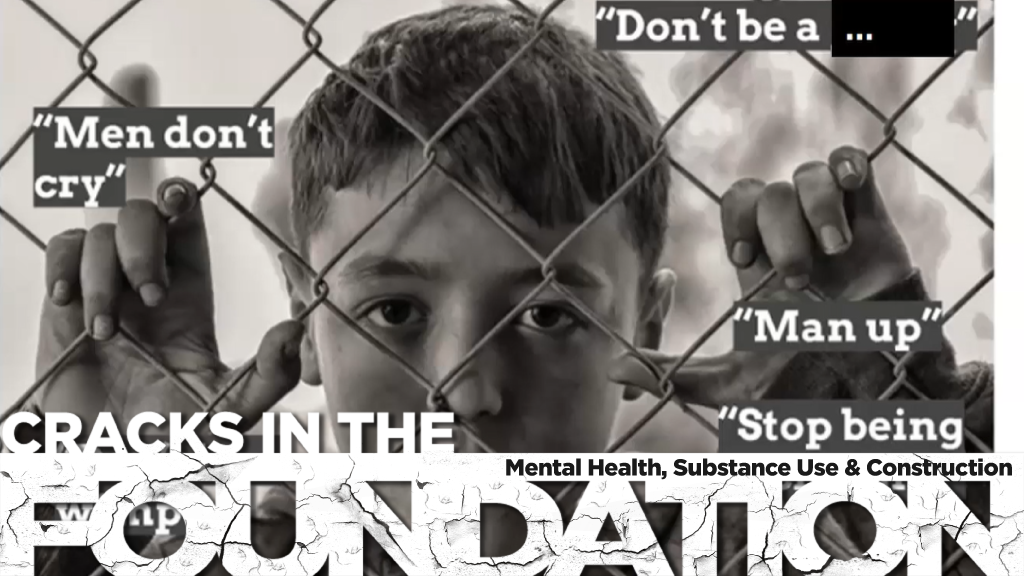Better data and research, re-examining the structure of construction work, preparing new workers for the unique rigours of a life in construction, developing sector-specific resources, helping small employers.
Those are among several priorities Ontario construction stakeholders have identified as they search for improvements to the way the sector deals with mental illness and addictions among its workers.
“There’s a lot more resources now than there were,” said Andrew Pariser, chair of the Residential Construction Council of Ontario’s (RESCON) health and safety committee.
“An ounce of prevention is worth a pound of cure, right?”
Both Carmine Tiano, director of occupational health services with the Provincial Building and Construction Trades Council of Ontario, and Patrick McManus, executive director of the Ontario Sewer and Watermain Construction Association, argue a discussion has to take place about the nature of work in the construction sector. McManus noted physically demanding work and other factors lead to stresses and painkillers.
“Part of the discussion is the issue of how we change the way that we do work in order to make it less physically demanding and to avoid those injuries. I think we’ve done a great job there in the last two decades,” he said.
“But there’s still a long way to go.”
How do we evaluate the effectiveness of those tools…to reduce the barriers around creating what we refer to as that psychologically safe workplace?
— Dr. Joel Moody
Ontario’s Chief Prevention Officer
Tiano said eventually collective bargaining will see employers and workers agreeing that working conditions need to be less onerous.
“Employees and unions need to restructure the way we do work,” said Tiano. “If we don’t, we’re never going to deal with the hazard.
“There needs to be a grown-up discussion on regulating the hours of work that people work across the board. So we don’t make it a construction issue, we make it a societal issue.”
The Building Trades have launched a program called Tomorrow’s Trades, spearheaded by program director Adam Melnick, that is running pilot programs across Ontario as an introduction to the trades for vulnerable and underrepresented populations. Tiano noted the program would be initiating potential workers into the skills and other demands of the job and that’s a perfect time to promote mental health awareness.
“We’ve got a cohort of young people about to get into the trades that are being told, here’s a hazard you need to look at,” said Tiano. “It’s a societal hazard and a construction hazard.”
RESCON’s manager of government relations Amina Dibe suggested 2021 was the year of awareness-building and getting in touch with members through surveys. The next step will be to assemble further data and crunch the findings to develop better policy.
Ontario’s Chief Prevention Officer Dr. Joel Moody said undertaking research to understand the effectiveness of programs will be a priority of his office in the coming years.
“As a system over the next five years, we want to prioritize how we can improve communication and co-ordination of the system. How do we evaluate the effectiveness of those tools…to reduce the barriers around creating what we refer to as that psychologically safe workplace.”
Sandro Perruzza, CEO of the Ontario Society of Professional Engineers, said his association has recognized the need to develop better policy on mental health issues in engineering but at this point they are still in the planning stages.
Dibe said the sector must find better ways to reach out to workers before problems become crises, citing the Infrastructure Health and Safety Association’s toolbox talk guide as a good start.
“Our audience is different from other industries,” she said. “It’s going back to that culture of construction and how do we tailor our outreach and our resources to make sure that we are actually breaking through and getting to the construction worker.”
Pariser said the construction sector needs to come to grips with how COVID affected workers’ mental health. Once the pandemic is under control, he suggests, some of the health and safety resources now allotted to COVID can be shifted to mental health.
Ontario General Contractors Association president Giovanni Cautillo commented, “We’ve lost people because of COVID, both to the illness but even more so the mental health, and people have felt that languishing, they felt the depression, they felt that pressure on their shoulders.”
In the end, the construction sector must step up to take care of the mental health of its own and also to assume a leadership role in broader society, Cautillo added.
“As a species, we need to help each other out. We need to ensure that we elevate one another, that’s the overriding goal. Especially when it’s a shared trauma like a global pandemic.”
Follow the author on Twitter @DonWall_DCN.











Recent Comments